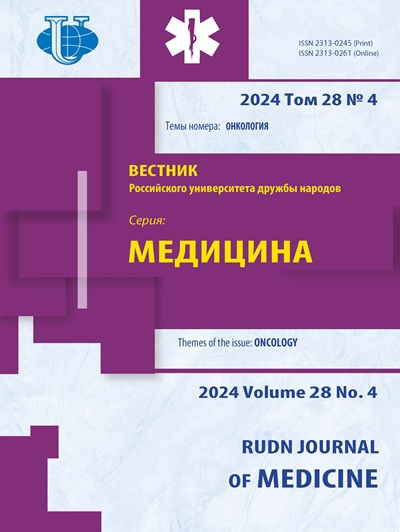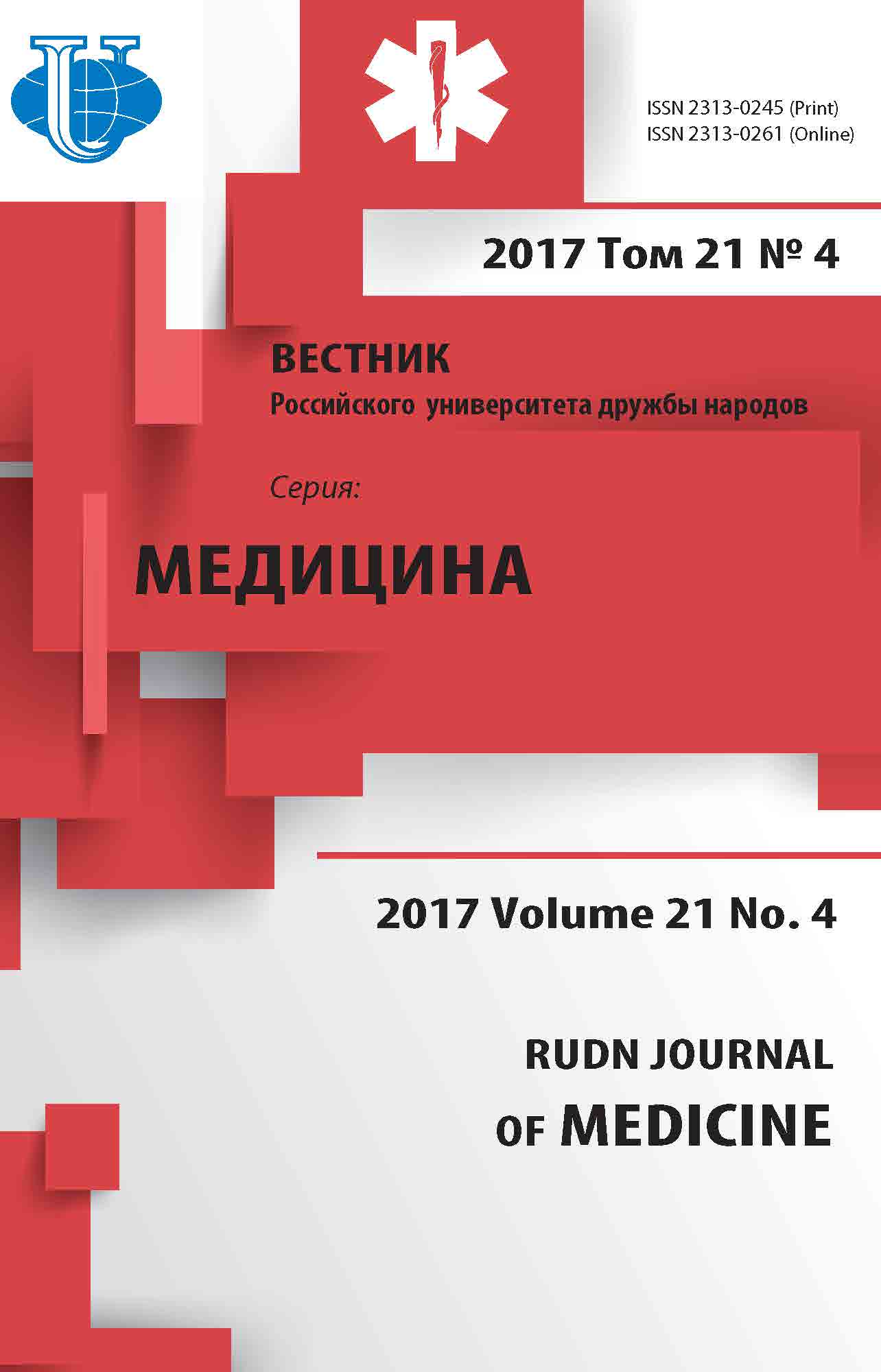INFLUENCE OF ANESTHESIA ON POSTOPERATIVE PERIOD AFTER UTERINE REMOVAL
- Authors: Zhenilo VM1, Lebedeva EA1, Zdiruk SV1, Akimenko TI1
-
Affiliations:
- Rostov State Medical University
- Issue: Vol 21, No 4 (2017)
- Pages: 393-401
- Section: Articles
- URL: https://journals.rudn.ru/medicine/article/view/17675
- DOI: https://doi.org/10.22363/2313-0245-2017-21-4-393-401
Cite item
Full Text
Abstract
The present study is devoted to the development of anesthesia tactics for the purpose of early recovery of patients after amputation of the uterus and shortening of hospitalization. The algorithm of pre-operative examination of middle-aged patients with uterine myoma is proposed to select the optimal method of anesthesia, which allows to optimize the postoperative period in women with an increased risk of develop-ing severe pain syndrome and postoperative cognitive impairment. The study showed the advantage of regional anesthesia with dexmedetomidine sedation in the operation of amputation of the uterus in the form of a lower incidence of postoperative cognitive dysfunction syndrome, marked postoperative pain, as well as a reduction in hospitalization, which in turn allows rationalizing the economic costs of medical institutions, as well as improving the population's satisfaction quality of care.
About the authors
V M Zhenilo
Rostov State Medical University
Author for correspondence.
Email: t.alimenko2010@yandex.ru
Владимир Михайлович Женило, заведующий кафедрой анестезиологии и реаниматологии, Федеральное государственное бюджетное образовательное учреждение высшего образования «Ростовский государственный медицинский университет»
E A Lebedeva
Rostov State Medical University
Email: t.alimenko2010@yandex.ru
S V Zdiruk
Rostov State Medical University
Email: t.alimenko2010@yandex.ru
T I Akimenko
Rostov State Medical University
Email: t.alimenko2010@yandex.ru
References
- American College of Obstetricians and Gynecologists. Alternatives to hysterectomy in the management of leiomyomas. Washington (DC): American College of Obstetricians and Gynecologists (ACOG); 2008 Aug. 14 p. (ACOG practice bulletin; no. 96).
- Barnard E.P., AbdElmagied A.M. et. al. Periprocedural outcomes comparing fibroid embolization and focused ultrasound: a randomized controlled trial and comprehensive cohort analysis. Am. J. Obstet. Gynecol. May 1, 2017; 216 (5); 500.e1—500.e11.
- Wu X.J., Guo Q., Cao B.S., Tan L.X., Zhang H.Y., Cai Y.R., Gao B.L. Uterine Leiomyomas: Safety and Efficacy of US-guided Suprapubic Transvaginal Radiofrequency Ablation at 1-year Follow-up. Radiology. June 1, 2016; 279 (3); 952—60.
- Bruijn A.M., Ankum W.M., Reekers J.A., Birnie E., van der Kooij S.M., Volkers N.A., Hehenkamp W.J. Uterine artery embolization vs hysterectomy in the treatment of symptomatic uterine fibroids: 10-year outcomes from the randomized EMMY trial. Am. J. Obstet. Gynecol. December 1, 2016; 215 (6); 745.e1—745.e12.
- Saeed S., Godwin O., Adu A.K., Ramcharan A. Pneumomediastinum and subcutaneous emphysema after successful laparoscopic supra-cervical hysterectomy. J Am Assoc Gynecol Laparosc. 2004 May;11(2):175—80.
- Buyanova S.N., Mgeliashvili M.V., Petrakova S.A. Sovremennye predstavleniya ob etiologii, patogeneze i morfogeneze miomy matki. Rossiiskii vestnik akushera-ginekologa. 2008. T. 8. Р. 45—51.
- Vlasov A.S., Kitiashvili I.Z., Parfenov L.L. i dr Neiroaksial'naya anesteziya v operativnoi ginekologii. Regionar.anest. i lechenie ostroi boli. 2009. T. 3. № 4. Р. 37—44.
- Ovechkin A.M., Gnezdilov A.V., Yurasov A.V. Lechenie posleoperatsionnoi boli kachestvennaya klinicheskaya praktika. M.: Meditsina, 2003. Р. 213.
















